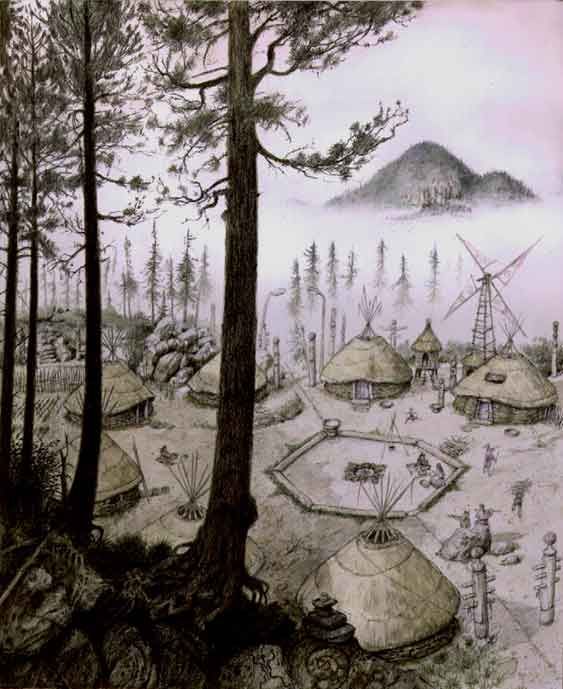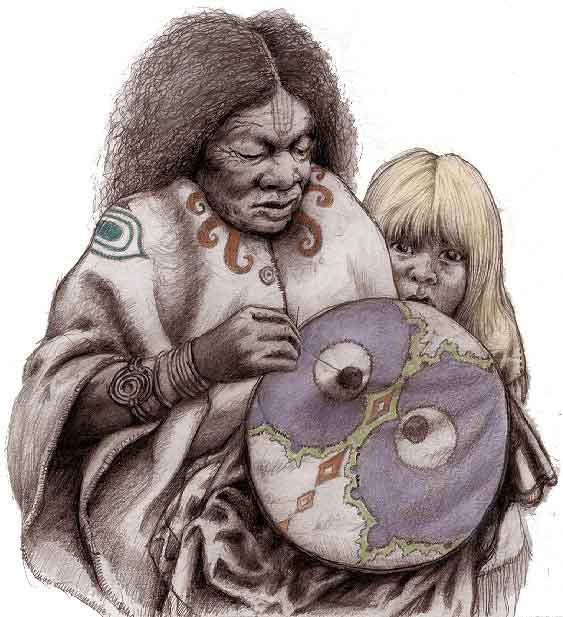Can we begin to imagine a truly ecologically sustainable world for our children's children? Or the telling details of a balanced and peace-seeking society? Not a perfect world, but something with a rich glow, the promise of being cool? If we can, we will gift to the next generation the two essential problem-solving tools needed to meet the environmental and social crises they face in the 21st century: vision and optimism.

The essential goal of the Smithsonian exhibit is to give young people back their future, to make home-planet earth more intriguing than outerspace fantasy. To fire imaginations blighted by post-destruction techno-landscapes with the challenge of finding a human place again in a vast, infinitely interesting interconnected community of life. To persuade the resourceful problem-solving American spirit to tackle a new social engineering with the same ferver it embraced the industrial revolution.
Can we inspire our next generations to
take the magnificent
growing, reaching, striving energy
of our civilization, and transform it into a search
for deeper knowledge of self and nature?
As
children of this generation race towards adulthood, they
acquire an acute awareness of the overwhelming environmental
and geo-political problems surrounding them. But for now
they are still children. If they are to become responsible
global citizens, the situation and its solutions must be
brought down to a scale their imaginations can manage.
Children are perennially delighted by such appealing
characters as the ingeniously inventive Swiss Family
Robinson with their creative solutions to the challenging
problems of everyday life.
This exhibit will be a richly detailed stage set inhabited
by a future generation of Swiss Family Robinsons who are in
the process of coming up with innovative solutions to such
problems as indigenous architecture, renewable energy, safe
technology, sustainable agriculture. It will be filled with
cleverly incorporated symbols and salvage of our present
civilization
In the foreground people in a circle will be caught in the act of "practicing
peace." In a
listening circle
to settle some dispute. All around will be signs of the return of endangered
species and other evidences of a healthy, diverse and stable ecology.
The organizers of the annual State of the World Forum
believe they see the outlines of a new global development
agenda and new global ethic. The transcultural principles
underlying this emerging ethic seem to lead naturally to a
more responsible, compassionate and collaborative vision for
the development of human societies, as well as a powerful
common evolutionary enterprise for our species.
Here is one blueprint for this evolutionary enterprise, at once the most radical and the most realistic. Most realistic because it's grounded on the solid foundation of a process / system that has worked for the last million years. Most radical because we have strayed so far from our true nature that returning to it seems wifty.
Right now.
